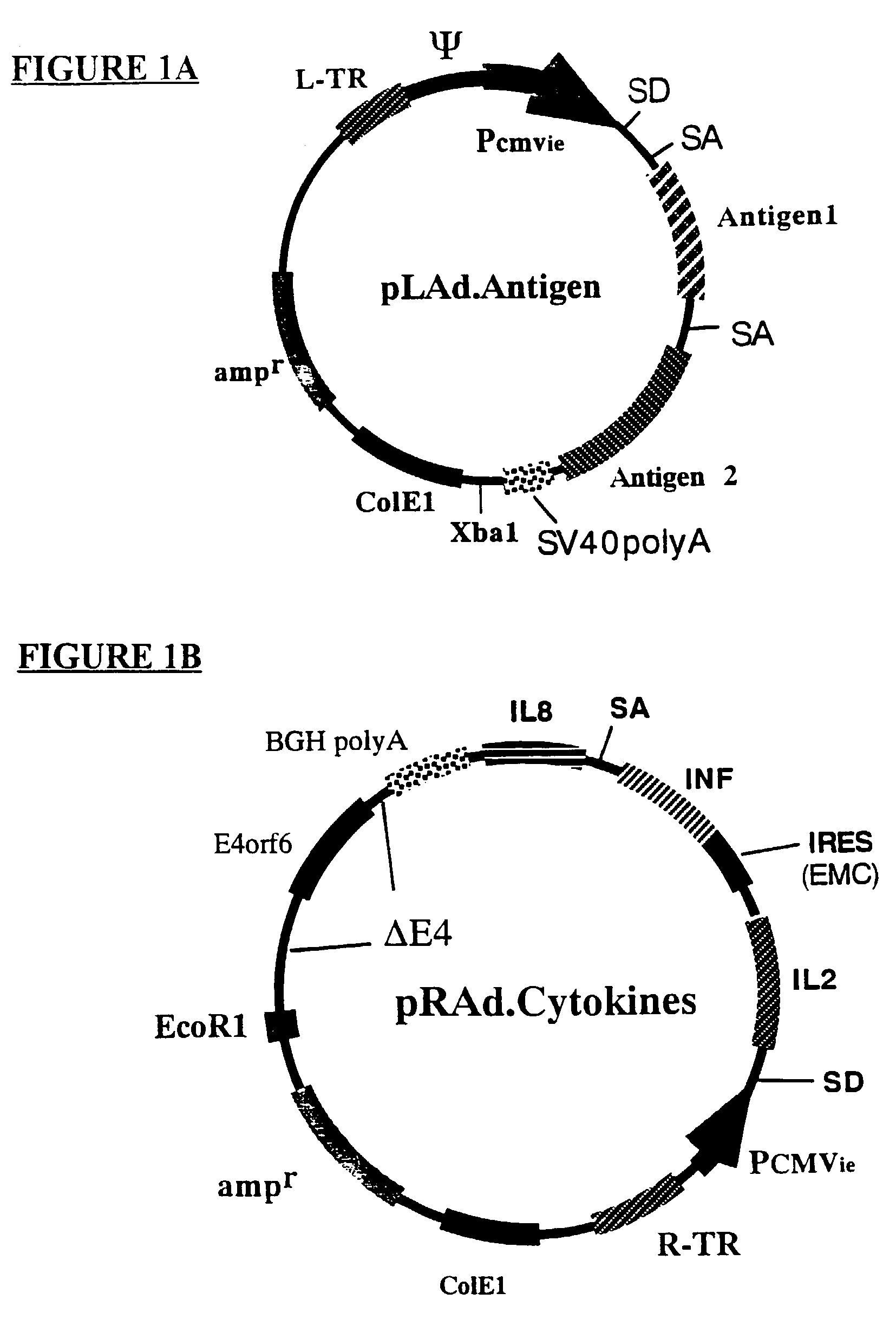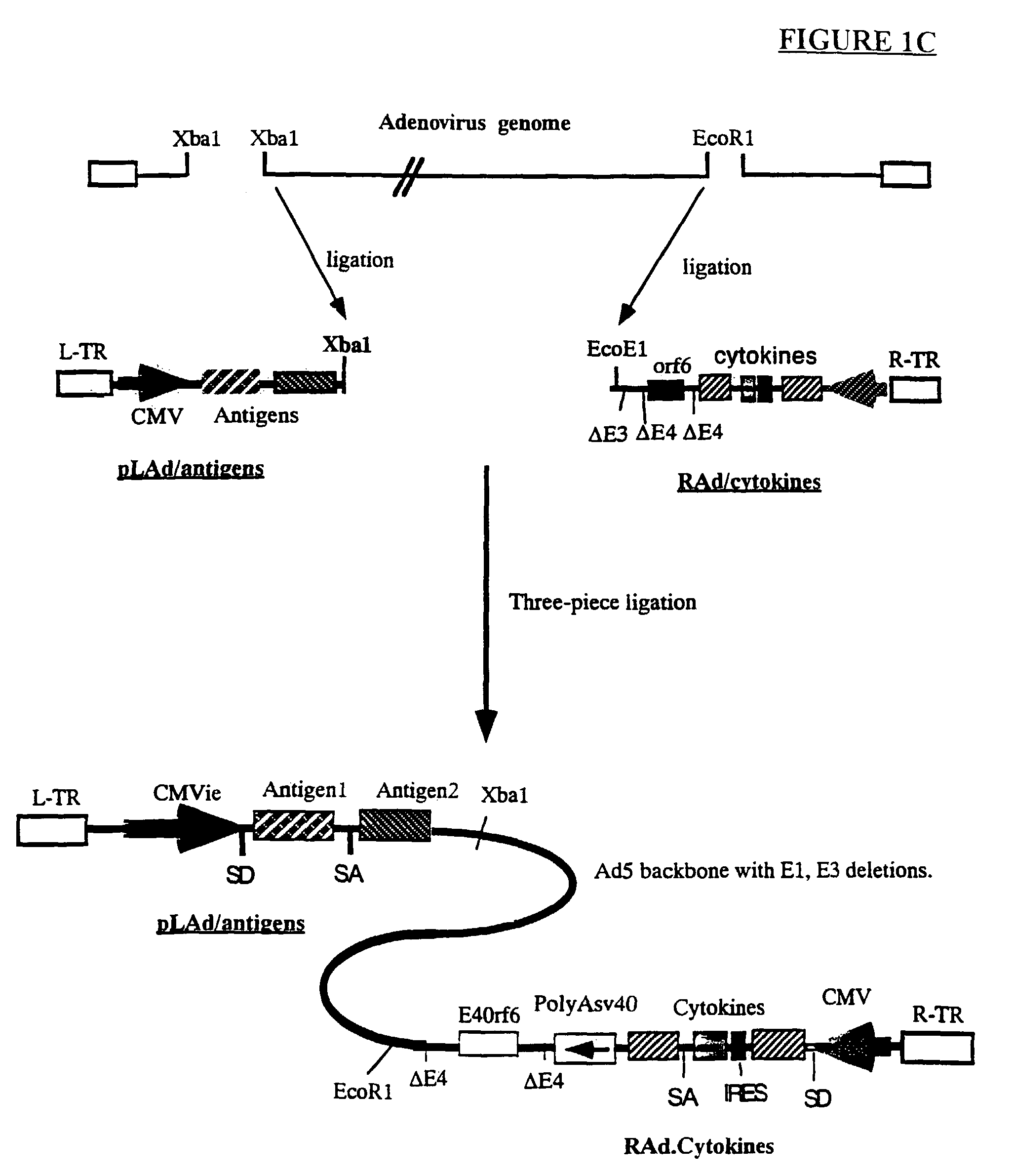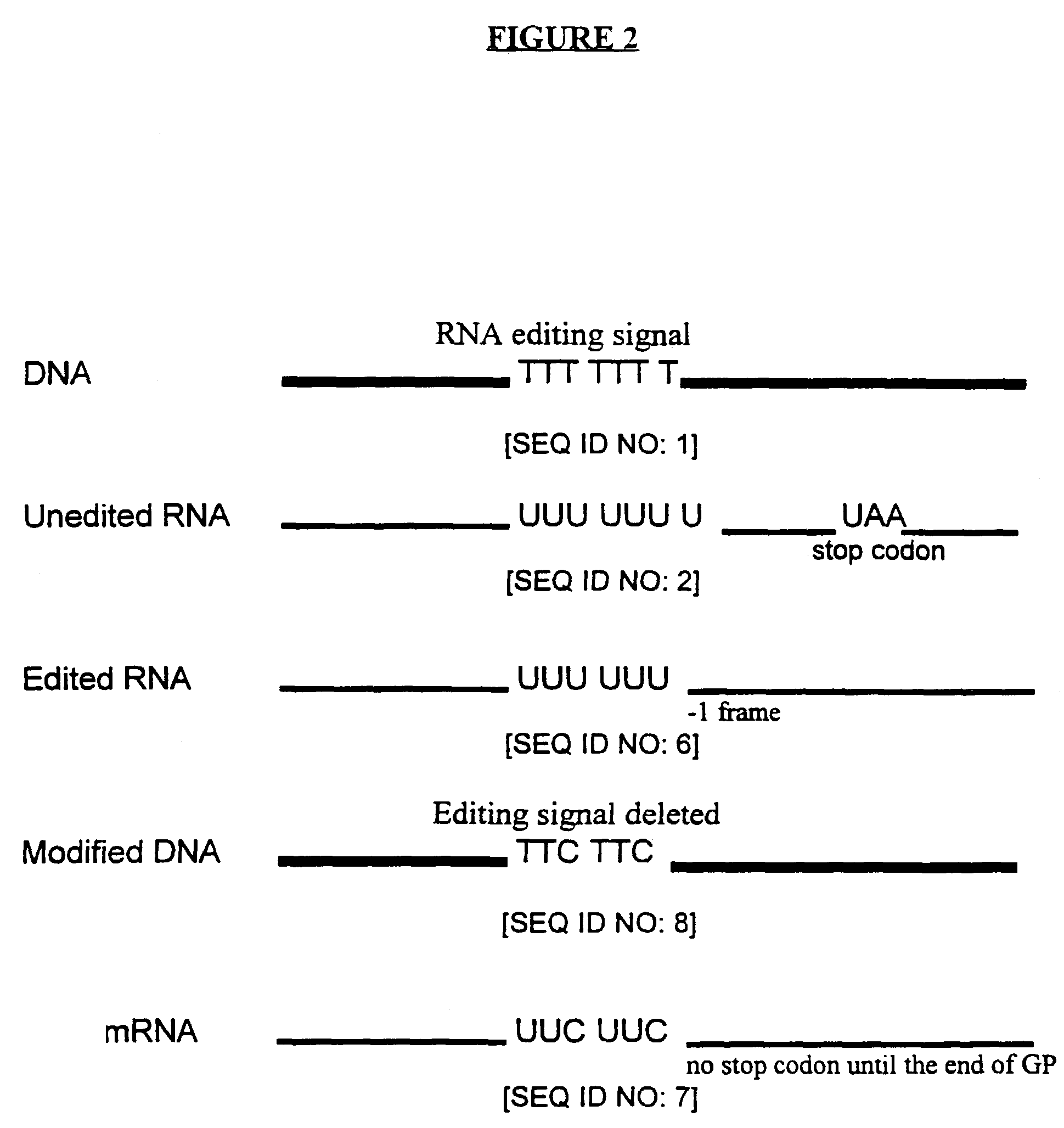Method of vaccination through serotype rotation
a serotype and virus technology, applied in the field of vaccines for stimulating immune responses, can solve the problems of limited protection rate, inability to achieve life-long immunity as desired, and inability to use denatured viruses or purified viral proteins, etc., to achieve strong and long-lasting immune response, enhance viral antigen immunogenicity, and induce strong and long-lasting immunity
- Summary
- Abstract
- Description
- Claims
- Application Information
AI Technical Summary
Benefits of technology
Problems solved by technology
Method used
Image
Examples
examples
[0374]The following procedures are described to illustrate how to make a genetic vaccine of the present invention against various pathogenic viruses. The genetic vaccine is based on an adenoviral vector with modified antigens derived from the pathogenic virus (e.g., Ebola virus, Hepatitis B virus and HIV) inserted into the adenoviral backbone. Additionally, the recombinant adenovirus also carries multiple genes encoding various cytokines. The recombinant adenovirus is replication-incompetent but still retains adenoviral infectivity. It is noted that genetic vaccine against other pathogenic viruses, bacteria and parasites may be constructed by one with ordinary skill in the art following similar procedures described in details below.
1. Genetic Vaccine Against Ebola Virus
[0375]Embodiments of the genetic vaccine against Ebola virus and methods of their construction are described in detail as follows.
1) Genetic Modification of the Ebola Virus Membrane Glycoproteins
[0376]The modification...
PUM
| Property | Measurement | Unit |
|---|---|---|
| Time | aaaaa | aaaaa |
| Time | aaaaa | aaaaa |
| Length | aaaaa | aaaaa |
Abstract
Description
Claims
Application Information
 Login to View More
Login to View More - R&D
- Intellectual Property
- Life Sciences
- Materials
- Tech Scout
- Unparalleled Data Quality
- Higher Quality Content
- 60% Fewer Hallucinations
Browse by: Latest US Patents, China's latest patents, Technical Efficacy Thesaurus, Application Domain, Technology Topic, Popular Technical Reports.
© 2025 PatSnap. All rights reserved.Legal|Privacy policy|Modern Slavery Act Transparency Statement|Sitemap|About US| Contact US: help@patsnap.com



